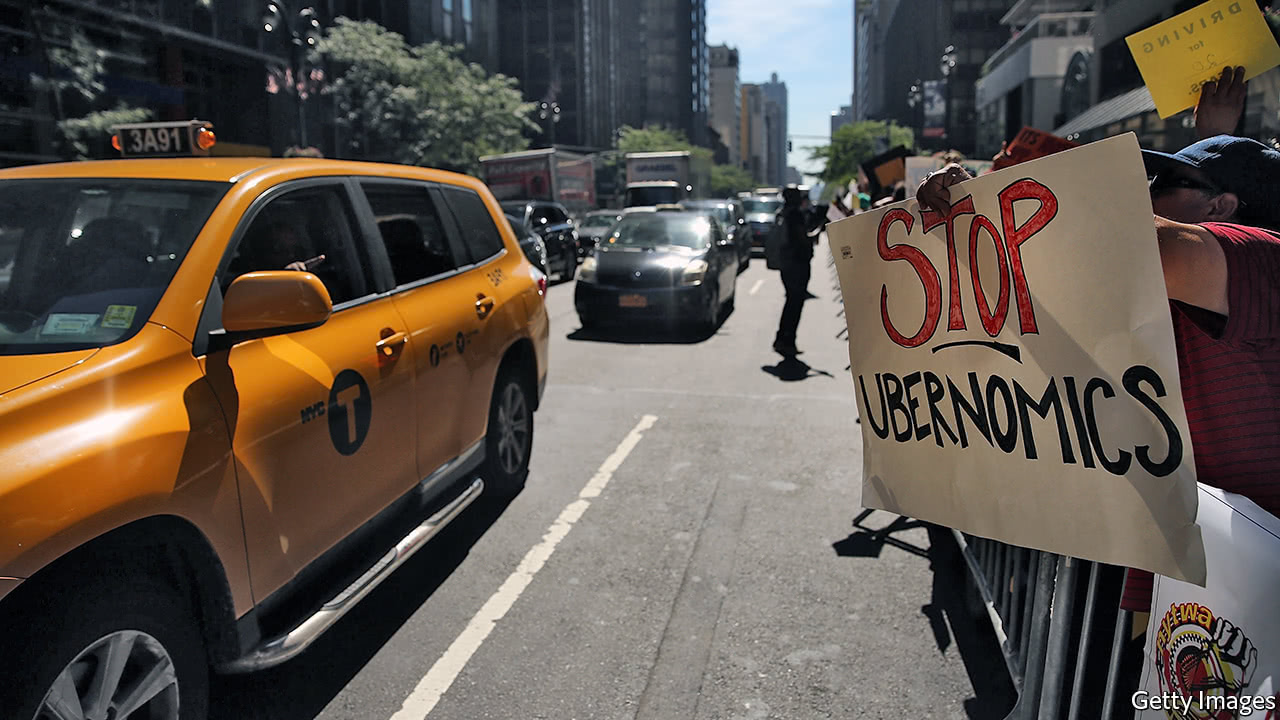
UBER has had a tough year. It has fired staff on the back of sexual-harassment allegations and faced reports of a hostile workplace culture. It has been sued for allegedly stealing self-driving-car technology. It lost customers when it flouted a New York taxi boycott in protest of President Donald Trump’s travel ban. And, amid all the turmoil, its boss resigned. But despite all this, the company continued to win more and more customers, including business travellers.
Now, however, there are signs that the tide may be turning. Certify, an expense-management software company, has released its latest quarterly report on business-travel spending in America. And for the first time since it started collecting data in 2013, Uber has seen a decline in use among business travellers.
-
Public-relations woes may be catching up with Uber
-
Japan’s ruling coalition retains a supermajority in snap election
-
“Albion” is a state-of-the-nation play for Brexit Britain
-
The economies of American states and cities are diverging
-
Why Boko Haram uses female suicide-bombers
-
The scope, and limits, of Austria’s Christian zeal
Uber and other ride-hailing apps still dominate the business-travel market for ground transport, accounting for around two-thirds of it. And they are growing at the expense of traditional services. The market share of taxis and rental cars declined by one percentage point to 7% and 28%, respectively, in the third quarter of the year.
But even as ride-hailing continued to grow, Uber saw its share inch down, from 55% to 54% in the latest quarter. By contrast, the market share of Lyft, a competitor, jumped three percentage points to 11%.
Uber’s position in the market may seem enviable, but it reveals risks in the company’s strategy. Uber has made consistent losses, with the aim of capturing a huge market share and then being able to raise prices. But that will only work if it remains the most-dominant player in the ride-hailing world and keeps rivals at bay.
Other data from the Certify report show the value of dominating a market. The most popular spot for travellers to expense both lunch and dinner in America, for instance, is McDonald’s. Though it is hardly anyone’s idea of a hearty business meal, its ubiquity bolsters its popularity.
But even McDonald’s cannot raise prices without losing business. That is because it has so many competitors snapping at its heels. Uber hoped to transcend this issue by capturing a vast market share. But if the latest report is a sign of a real trend, Uber’s dominance may be waning.
Source: economist
Public-relations woes may be catching up with Uber